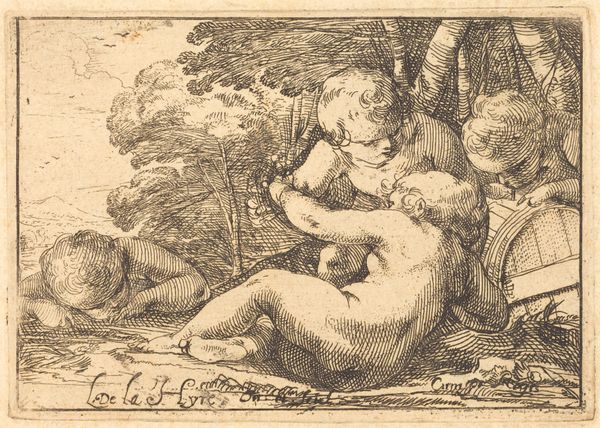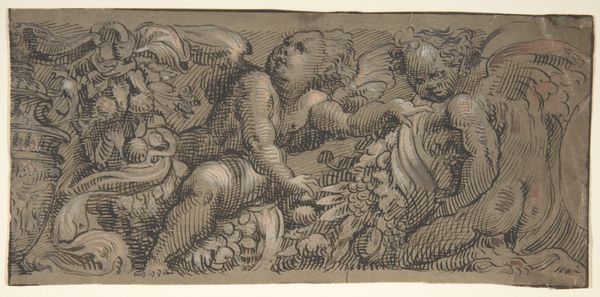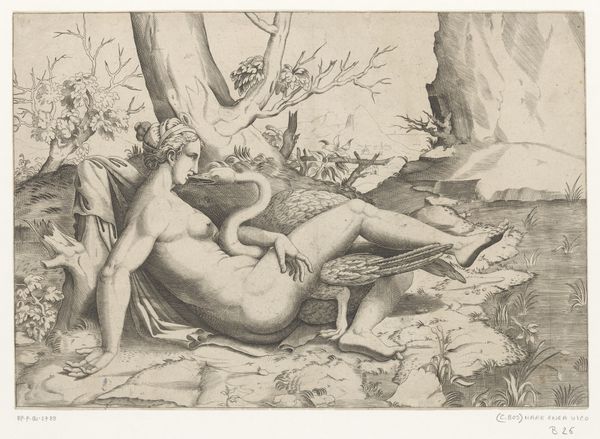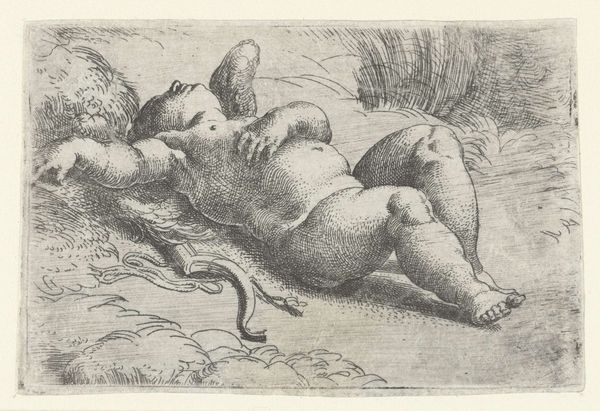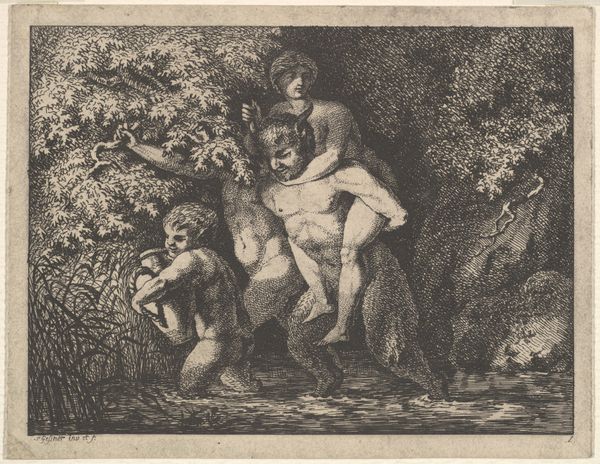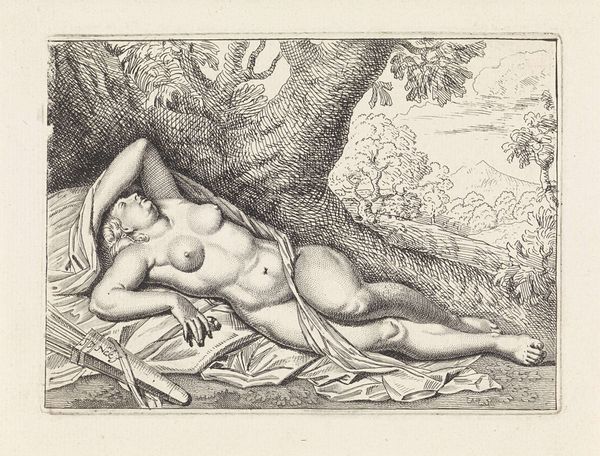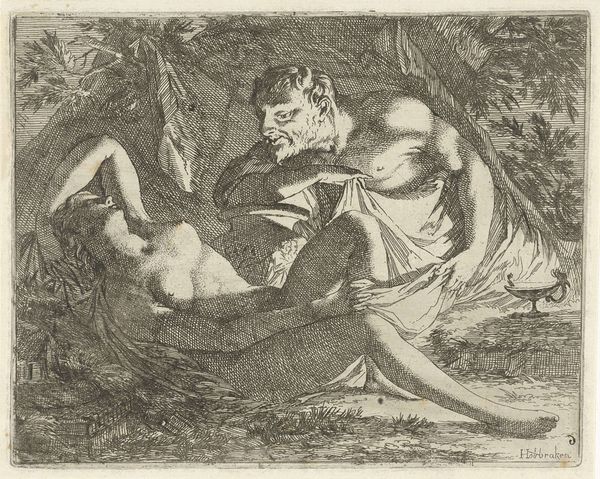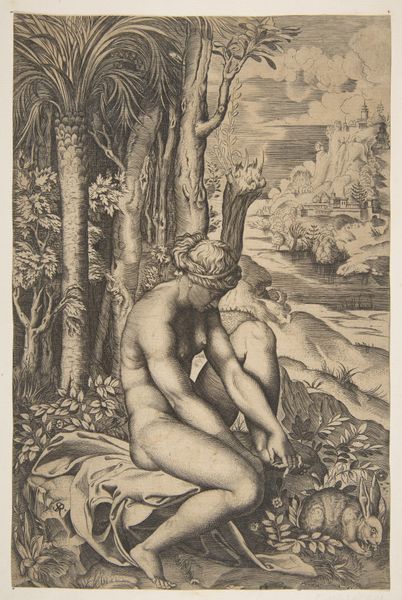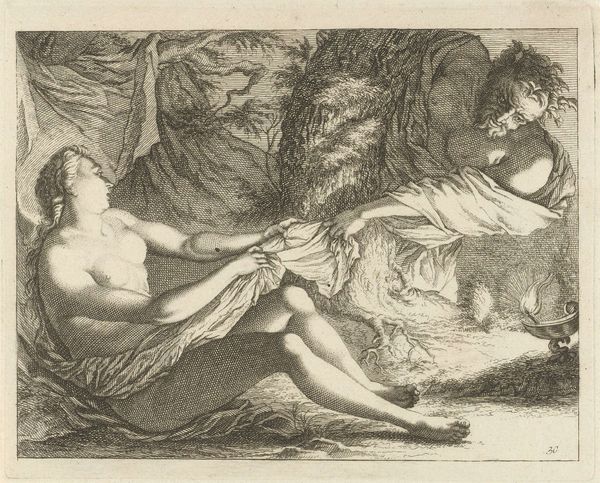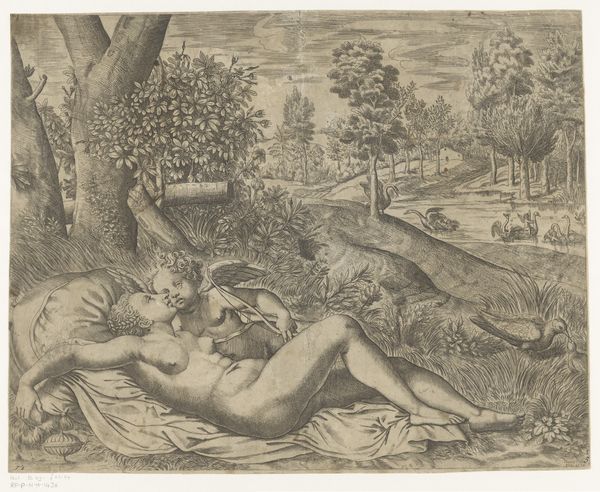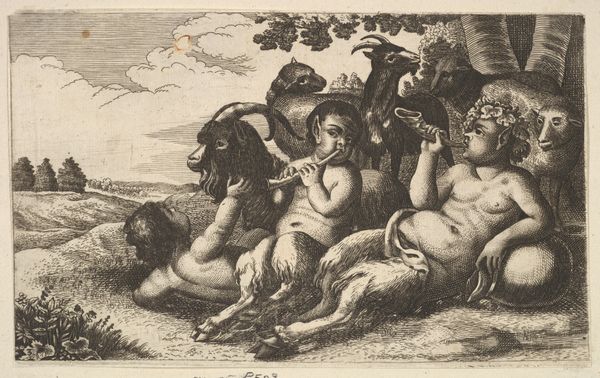
print, engraving
#
baroque
# print
#
landscape
#
figuration
#
history-painting
#
nude
#
engraving
Dimensions: plate: 7.7 x 11.6 cm (3 1/16 x 4 9/16 in.) sheet: 8.1 x 12.2 cm (3 3/16 x 4 13/16 in.)
Copyright: National Gallery of Art: CC0 1.0
This is Laurent de La Hyre’s "Diana Recumbent," an etching made in the mid-17th century. The process of etching involves drawing a design with a sharp needle through a wax coating on a metal plate, which is then bathed in acid. The acid bites into the exposed metal, creating recessed lines that hold ink. Here, La Hyre uses line to describe the smooth volumes of Diana’s reclining body, her drapery, and the surrounding landscape. Notice how he varies the density and direction of the lines to create tone and texture. The labor-intensive process of etching allowed artists like La Hyre to produce multiple copies of their work, which were then sold to a wider audience. Prints like this one played a crucial role in the dissemination of artistic ideas and styles during the early modern period. In this way, it encapsulates the early stirrings of a modern art market, where the hand-made is mediated through a reproducible technology. So, think about how the material process of etching affected not only the appearance of the image, but its social life as well.
Comments
No comments
Be the first to comment and join the conversation on the ultimate creative platform.
